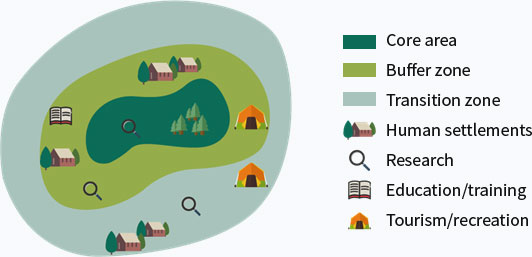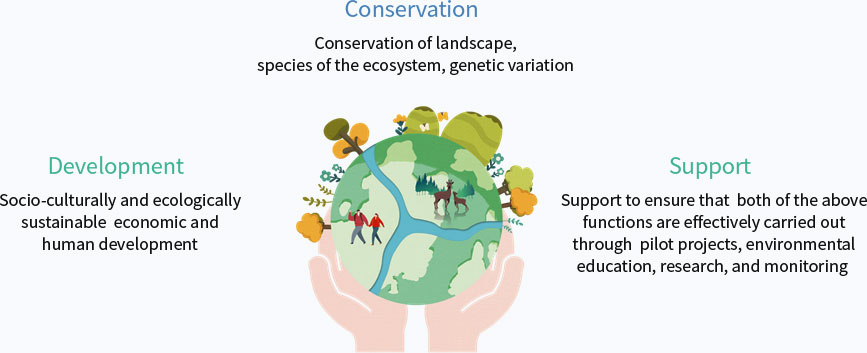Functions of the Biosphere Reserves
Concept of biosphere reserves
The UNESCO Biosphere Reserve (BR) is one of the three internationally protected areas designated by the UNESCO Man and the Biosphere (MAB) program for "land, coastal and marine ecosystems that represent biopolitical areas where the biodiversity must to be conserved.“ It aims to implement sustainable development that harmonizes conservation and utilization of biodiversity, and is primarily referred to as the "BR." It designates “Transboundary Biosphere Reserves (TBR)” around border areas, which include the Mount Paekdu Biosphere Reserve applied by both North Korea and China.
Although it is an international protocol with no legal effect, some countries such as Japan and Austria use the name Eco-park and Biosphärenpark instead of the name Biosphere Reserve to reduce negative sentiment among residents.
Use of biosphere reserves
A biosphere reserve is divided into the core area, buffer zone, and transition zone.
- Core Area : An area where biodiversity conservation is considered a top priority, and research and investigations are conducted for that purpose
- Buffer Zone : An area where the core area is protected from the outside An area in which environmental education, recreation, eco-tourism, research, etc. are carried out
- Transition Zone : An area used for various purposes, such as agricultural activities, residential areas, etc. An area in which local resources are managed together and various stakeholders cooperate for sustainable development
Functions of biosphere reserves
Biosphere reserves must perform the three functions of "conservation, development, and support."


